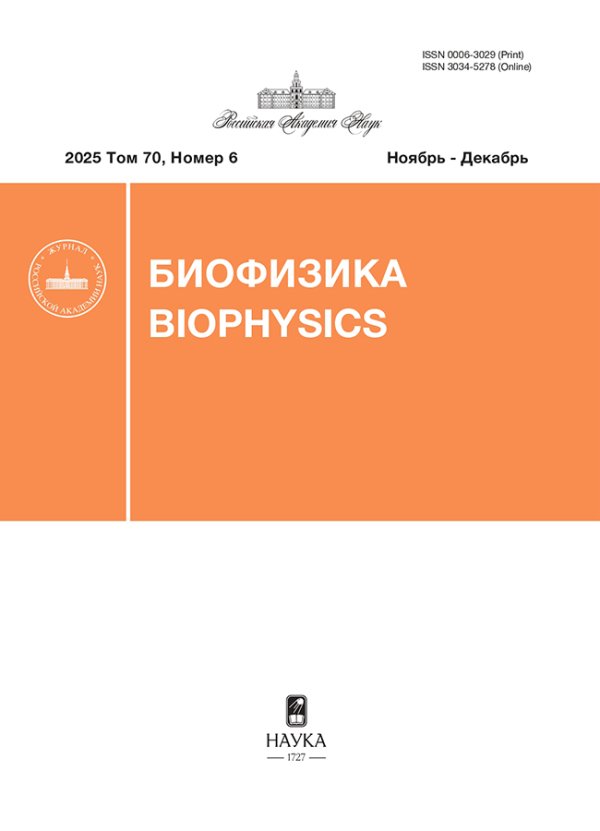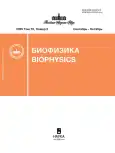Activation of the Angiotensin Converting Enzyme Significantly Contributes to Oxidative Stress in the Aorta of Rats with Alloxan-Induced Diabetes
- Authors: Samokhvalova T.V1, Korystova A.F1, Shaposhnikova V.V1, Korystov Y.N1
-
Affiliations:
- Institute of Theoretical and Experimental Biophysics, Russian Academy of Sciences
- Issue: Vol 70, No 5 (2025)
- Pages: 952-957
- Section: Complex systems biophysics
- URL: https://journal-vniispk.ru/0006-3029/article/view/348536
- DOI: https://doi.org/10.31857/S0006302925050115
- ID: 348536
Cite item
Abstract
About the authors
T. V Samokhvalova
Institute of Theoretical and Experimental Biophysics, Russian Academy of SciencesPushchino, Russia
A. F Korystova
Institute of Theoretical and Experimental Biophysics, Russian Academy of SciencesPushchino, Russia
V. V Shaposhnikova
Institute of Theoretical and Experimental Biophysics, Russian Academy of SciencesPushchino, Russia
Y. N Korystov
Institute of Theoretical and Experimental Biophysics, Russian Academy of Sciences
Email: ykorystov@rambler.ru
Pushchino, Russia
References
- Danaei G., Finucane M. M., Lu Y., Singh G. M., Cowan M. J., Paciorek C. J., Lin J. K., Farzadfar F., Khang Y.-H., Stevens G. A., Rao M., Ali M. K., Riley L. M., Robinson C. A., and Ezzati M. National, regional, and global trends in fasting plasma glucose and diabetes prevalence since 1980: systematic analysis of health examination surveys and epidemiological studies with 370 country-years and 27 million participants. Lancet, 378 (1), 31–40 (2011). doi: 10.1016/S0140-6736[11]60679-X
- Delbin M. A. and Trask A. J. The diabetic vasculature: Physiological mechanisms of dysfunction and influence of aerobic exercise training in animal models. Life Sci., 102 (1), 1–9 (2014). doi: 10.1016/j.lfs.2014.02.021
- Giugliano D., Ceriello A., and Paolisso G. Oxidative stress and diabetic vascular complications. Diabetes Care, 19 (3), 257–267 (1996). doi: 10.2337/diacare.19.3.257
- De Vriese A. S., Verbeuren T. J., Van de Voorde J., Lameire N. H., and Vanhoutte P. M. Endothelial dysfunction in diabetes. Br. J. Pharmacol., 130 (5), 963–974 (2000). doi: 10.1038/sj.bjp.0703393
- Kayama Y., Raaz U., Jagger A., Adam M., Schellinger I. N., Sakamoto M., Suzuki H., Toyama K., Spin J. M., and Tsao P. S. Diabetic cardiovascular disease induced by oxidative stress. Int. J. Mol. Sci., 16, 25234–25263 (2015). DOI: 103390/ijms101025234
- Sharifi A. M., Mousavi S. H., and Larijani B. Study of interaction between nitric oxide and ACE activity in STZ-induced diabetic rats: role of insulin. Pharmacol. Res., 50 (3), 261–266 (2004). doi: 10.1016/j.phrs.2004.02.009
- Fiordaliso F., Cuccovillo I., Bianchi R., Bai A., Doni M., Salio M., De Angelis N., Ghezzi P., Latini R., and Masson S. Cardiovascular oxidative stress is reduced by an ACE inhibitor in a rat model of streptozotocin-induced diabetes. Life Sci., 79 (1), 121–129 (2006). doi: 10.1016/j.lfs.2005.12.036
- Griendling K. K., Minieri C. A., Ollerenshaw J. D., and Alexander R. W. Angiotensin II stimulates NADH and NADPH oxidase activity in cultured vascular smooth muscle cells. Circ. Res., 74 (6), 1141–1148 (1994). doi: 10.1161/01.RES.74.6.1141
- Landmesser U., Cai H., Dikalov S., McCann L., Hwang J., Jo H., Holland S. M., and Harrison D. G. Role of p47phox in vascular oxidative stress and hypertension caused by angiotensin II. Hypertension, 40 (4), 511–515 (2002). doi: 10.1161/01.HYP.0000032100.23772.98
- Arutyunyan T. V., Korystova A. F., Kublik L. N., Levitman M. Kh., Shaposhnikova V. V., and Korystov Yu. N. Taxifolin and fucoidin abolish the irradiation-induced increase in the production of reactive oxygen species in rat aorta. Bull. Exp. Biol. Med., 160 (5), 635–638 (2016). doi: 10.1007/s10517-016-3236-2
- Korystova A. F., Kublik L. N., Samokhvalova T. V., Shaposhnikova V. V., and Korystov Yu. N. Black tea is more effective than green tea in prevention of radiation-induced oxidative stress in the aorta of rats. Biomed. Pharmacother., 142, 112064 (2021). doi: 10.1016/j.biopha.2021.112064
- Samokhvalova T. V., Kim Y. A., Korystova A. F., Kublik L. N., Shaposhnikova V. V., and Korystov Yu. N. [+]-Catechin stereoisomer and gallate induce oxidative stress in rat aorta. Molecules, 27, 3379 (2022). DOI: 103390/molecules27113379
- Korystov Yu. N., Emel’yanov M. O., Korystova A. F., Levitman M. Kh., and Shaposhnikova V. V. Determination of reactive oxygen and nitrogen species in rat aorta using the dichlorofluorescein assay. Free Radic. Res., 43 (2), 149–155 (2009). doi: 10.1080/10715760802644686
- Mahesh T. and Menon V. P. Quercetin alilevates oxidative stress in streptozotocin-induced diabetic rats. Phytother. Res., 18 (2), 123–127 (2004). doi: 10.1002/ptr.1374
- Garcia-Pedraza J.-A., Ferreira-Santos P., Aparicio R., Montero M.-J., and Morán A. Blocking 5-HT2 receptor restores cardiovascular disorders in type 1 experimental diabetes. Sci. Rep., 6, 33979 (2016). doi: 10.1038/srep33979
- Obasi D. C. and Ogugua V. N. GC-MS analysis, pH and antioxidant effect of Ruzu herbal bitters on alloxan-induced diabetic rats. Biochem. Biophys. Rep., 27, 101057 (2021). doi: 10.1016/j.bbrep.2021.101057
- de Cavanagh E. M. V., Inserra F., Tobili J., Stella I., Fraga C. G., and Ferder L. Enalapril attenuates oxidative stress in diabetic rats Hypertension, 38 (5), 1130–1136 (2001). doi: 10.1161/hy1101.092845
- Anikina V. A., Kim Y. A., Korystova A. F., Levitman M. Kh., Shaposhnikova V. V., and Korystov Y. N. Effects of catechin on activity of angiotensin-converting enzyme and generation of reactive oxygen species in rat aorta. Bull. Exp. Biol. Med., 168, (11), 565–568 (2019). doi: 10.1007/s10517-020-04766-0
- Hadcocks S., Richardson M., Winocour P., and Hatton M. W. C. Intimal alterations in the first six months of alloxan-induced diabetes. Arterioscler. Thromb., 11 (3), 517–529 (1991). doi: 10.1161/01.ATV.11.3.517
- Kim J. A., Berliner J. A., Natarajan R. D., and Nadler J. L. Evidence that glucose increases monocyte binding to human aortic endothelial cells. Diabetes, 43 (9), 1103–1107 (1994). doi: 10.2337/diab.43.9.1103
Supplementary files










